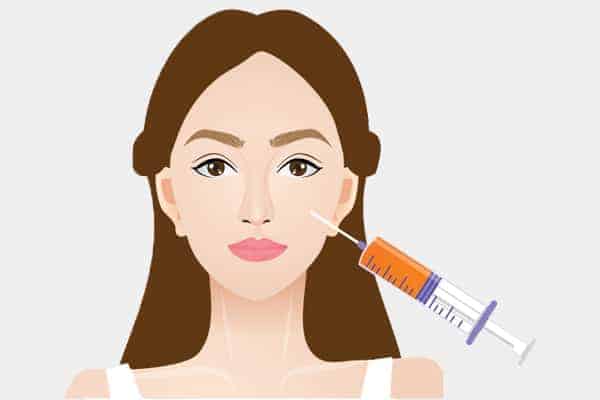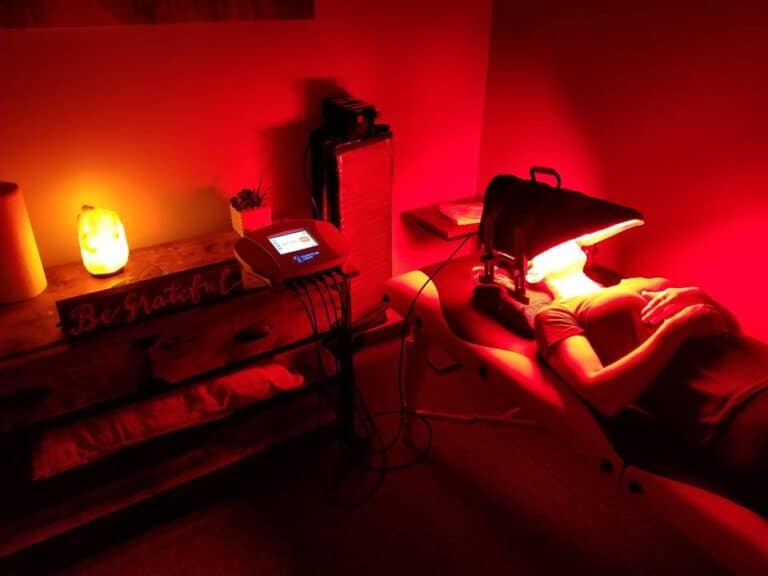Facial Reconstruction with Fat: Top Techniques for Success
Facial reconstruction with fatty tissue and lip augmentation has become a popular technique in cosmetic surgery, often involving submental liposuction and skin regeneration. This method dates back to the early 20th century when doctors first experimented with harvesting fatty tissue for lipoinjection in cosmetic procedures. Over the years, it has evolved into a safe and effective cosmetic procedure to restore volume, enhance features, and improve facial balance using fat grafting technology and fat transplantation through the fat grafting procedure.
Using the body’s own fatty tissue offers natural results in cosmetic procedures and minimizes the risk of rejection for the graft in the area. Patients appreciate the dual benefit of liposuction for fat removal of fatty tissue and facial enhancement through cosmetic procedures and graft. This innovative approach, including cosmetic procedures like autologous fat grafting and fat transplantation, not only rejuvenates the face but also boosts confidence through the fat grafting procedure. Understanding the process and benefits of cosmetic procedures, such as fat graft and fat transfer, can help you make informed decisions about your options in facial aesthetics.
Key Takeaways
- Facial fat grafting is a procedure that uses your own fat to restore volume and improve facial contours, making it a natural option for facial reconstruction.
- To prepare for fat grafting, consult with a qualified surgeon to discuss your goals and ensure you are an ideal candidate based on your health and skin condition.
- Ideal candidates typically include those with volume loss due to aging or weight loss, such as those who may benefit from fat graft or fat transfer, but it’s essential to understand the indications and contraindications before proceeding.
- The procedure involves several steps, including grafting fat harvested from another part of your body, processing it, and injecting it into targeted facial areas for enhancement.
- Recovery is crucial after fat graft; follow aftercare instructions carefully to minimize risks and ensure the best results. Expect some swelling and bruising from the fat graft as part of the healing process.
- Be aware of potential complications, such as infection or uneven results from fat graft procedures, and discuss these with your surgeon to make informed decisions about your treatment.
What Is Facial Fat Grafting
Definition
Facial fat grafting is a cosmetic procedure. It involves grafting fat from one part of the body to the face. Surgeons often take fat graft from areas like the abdomen or thighs. This method uses liposuction to collect the fat. After collection, the fat graft is processed and injected into specific areas of the face.
Goals
The primary goal of facial fat grafting is to enhance facial volume. Many people experience loss of volume as they age. This can lead to a tired or hollow appearance. By adding fat graft, patients can achieve a more youthful look. The procedure also improves facial contour and rejuvenation. Patients often see smoother skin and improved symmetry.
Technique
Facial fat grafting is considered a minimally invasive technique. Unlike traditional facelifts, it does not require large incisions. The recovery time is typically shorter as well. Patients usually experience less swelling and bruising compared to other procedures involving fat graft. This makes it an appealing option for many individuals seeking cosmetic enhancement, including fat graft.
Deep Facial Fat Compartments
Understanding deep facial fat compartments is crucial in this procedure. These compartments are layers of fat located under the skin. They help define facial structure and support overall appearance. By targeting these areas with fat grafts, surgeons can create natural-looking results. Proper placement of fat enhances contours without looking artificial.
Benefits
Facial fat grafting offers several benefits:
- Natural results
- Long-lasting effects
- Dual benefit of body contouring
- Minimal scarring
Patients enjoy results that look real because they use their own tissue, specifically through fat graft. This reduces the risk of rejection or allergic reactions.
Considerations
While facial fat grafting has many advantages, there are considerations to keep in mind. Not all candidates may be suitable for this procedure. Factors such as overall health, skin condition, and fat graft play a role in eligibility. Consulting with a qualified surgeon is essential for determining if this fat graft option is right for you.
Recovery Process
After the fat graft procedure, patients should expect some swelling and bruising. These effects usually subside within a few weeks. Most people can return to normal activities shortly after fat graft surgery. Following post-operative care instructions, especially after a fat graft, is important for optimal healing.
How Fat Grafting Works
Fat Removal
The fat grafting procedure begins with fat removal from specific areas of the body. Common sites include the inner thigh, flanks, or abdomen. Surgeons use liposuction to extract this fat. This method involves inserting a thin tube called a cannula into the targeted area. The tube suctions out unwanted fat deposits.
Liposuction is minimally invasive and requires only small incisions. Patients usually experience less downtime compared to traditional surgeries. Once the fat is removed, it can be processed for use in facial reconstruction.
Purification Process
After harvesting, the next step involves purifying the fat grafts. The extracted fat contains not just fat cells but also blood, oils, and other fluids. To ensure high-quality results, surgeons must separate these components.
Typically, they use a centrifuge for purification. This machine spins the fat at high speeds, allowing heavier particles to settle. The cleaner fat is then collected for injection. This purification process enhances the viability of the fat cells.
Blood Supply Connection
Injecting the purified fat graft into the face is just one part of the process. For long-lasting results, it’s crucial to connect these injected fat cells to a blood supply. Without proper vascularization, many fat grafts may not survive.
Surgeons strategically place the fat grafts in areas with good blood flow. This helps ensure that the injected cells receive nutrients and oxygen. In some cases, doctors may use techniques like micro-fat grafting for better integration.
Successful autologous fat grafting relies on this connection between new cells and existing blood vessels. It increases the chances of survival for the transplanted fat cells.
Grafting Techniques
Various grafting techniques exist in facial reconstruction using fat. Each technique aims to achieve optimal results based on individual patient needs. Some methods involve layering multiple injections for volume enhancement.
Surgeons often tailor their approach based on factors such as skin type and facial structure. They assess each patient’s unique anatomy before deciding on a technique.
Graftable Fat Areas
Certain areas of the body yield better quality graftable fat than others. For instance, abdominal fat tends to be more suitable than thigh fat due to its texture and consistency.
Selecting the right source of fat can significantly impact the success of the procedure.
Preparing for Fat Grafting
Medical Evaluation
Patients should undergo a thorough medical evaluation before fat grafting. This assessment helps determine if they are suitable candidates for the procedure. Doctors will review medical history, current medications, and any allergies. They may also conduct blood tests to check overall health. Identifying any underlying conditions is crucial. Conditions such as diabetes or heart disease can affect healing.
Medication Management
Avoiding certain medications and supplements is essential before the grafting procedure. Blood thinners like aspirin and ibuprofen can increase bleeding risks. Patients should stop taking these at least two weeks prior to surgery. Herbal supplements, such as ginkgo biloba and fish oil, can also pose risks. Discussing all medications with a healthcare provider ensures safety during the procedure.
Healthy Lifestyle
Maintaining a healthy lifestyle plays a significant role in surgical outcomes. A balanced diet supports healing after fat transplantation. Nutrient-rich foods provide essential vitamins and minerals that aid recovery. Regular exercise strengthens the body and improves circulation. Engaging in light activities like walking can enhance overall well-being.
Fat Preparation Techniques
Fat preparation involves specific techniques to ensure the best results. The fat harvesting process uses liposuction to collect fat from donor areas. Common sites include the abdomen, thighs, or flanks. After harvesting, the fat undergoes processing to separate viable fat cells from unwanted materials.
The use of a supernatant oil commercial fat grafting preparation kit strainer is common in this stage. This tool helps refine the harvested fat by removing excess oils and debris. Properly prepared fat increases the success rate of fat injections into the target area.
Grafting Procedure Steps
The grafting procedure consists of several steps:
- Consultation: Discuss goals and expectations with the surgeon.
- Harvesting: Use liposuction to collect fat from donor areas.
- Processing: Refine the harvested fat for injection.
- Injection: Inject processed fat into desired areas.
Each step requires careful attention to detail for optimal results.
Trauma Liposuction Technique
The trauma liposuction technique minimizes damage during fat removal. This method preserves more viable fat cells for transplantation. Surgeons use specialized instruments to reduce trauma to surrounding tissues. Less trauma leads to better healing and improved outcomes for patients.
Ideal Candidates for Fat Grafting
Aging Signs
Individuals showing signs of aging are often ideal candidates for fat grafting. Common signs include volume loss, wrinkles, and drooping eyebrows. These changes can make a person look tired or older than they feel. Fat grafting helps restore lost volume and smooth out wrinkles. This method uses autologous fat, which means the fat comes from the patient’s own body.
Facial Contours
Many people are unhappy with their facial contours. They may seek to enhance areas like the chin, forehead, and cheeks. Using fat grafting can improve projection in these areas. Fat deposits taken from other parts of the body provide natural-looking results. This approach is especially appealing for those who want a more defined jawline or fuller cheeks.
Age Considerations
Most candidates for fat grafting are typically in their late 40s or older. At this age, the skin loses elasticity and volume naturally. This makes it harder to maintain youthful facial features. The procedure can address these concerns effectively. Younger individuals may also benefit if they have specific issues like lipodystrophy or other conditions affecting facial fat distribution.
Health Factors
Health plays a crucial role in determining candidacy for fat grafting. Candidates should be in good overall health with no serious medical conditions. Those with certain conditions might not be suitable for the procedure. It’s important to consult with a qualified professional before proceeding.
Fat Donor Sites
The success of fat grafting depends on choosing appropriate fat donor sites. Common areas include the abdomen, thighs, and buttocks. These regions usually have sufficient fatty tissue for extraction. The extracted adipose tissue is then processed and injected into targeted facial areas.
Recovery Expectations
Recovery time varies among individuals but is generally manageable. Most experience swelling and bruising at the injection sites initially. These symptoms typically resolve within a few weeks. Patients should follow post-procedure care instructions closely to ensure optimal results.
Emotional Impact
Fat grafting can significantly impact an individual’s self-esteem and confidence. Many report feeling happier with their appearance after the procedure. This emotional boost can lead to a more positive outlook on life.
Indications and Contraindications
Indications
Patients often seek facial reconstruction with fat injections for various reasons. This procedure can improve skin quality, reduce wrinkles, and enhance facial volume. Many individuals desire a more youthful appearance. Fat grafting can provide natural-looking results. It uses the patient’s own fat, making it less likely to cause allergic reactions.
The areas commonly treated include the cheeks, lips, and under the eyes. Fat injections can add projection to these areas. This augmentation helps restore lost volume due to aging or weight loss. Patients typically experience minimal downtime after the procedure.
Contraindications
Certain individuals should avoid this procedure. Those with severe medical conditions may face risks during fat grafting. Active infections in the body also pose serious concerns. Patients with poor overall health should not consider this option. The body’s ability to heal is crucial for recovery.
Psychological factors also play a role in determining candidacy. Individuals with unrealistic expectations may not be satisfied with the results. It’s important to have a clear understanding of what fat grafting can achieve. Patients should be mentally prepared for the outcomes.
Cautionary Considerations
Caution is necessary when evaluating patients for fat injections. Those with psychological instability may misinterpret their appearance post-procedure. Emotional well-being significantly affects satisfaction levels after cosmetic procedures.
Healthcare providers must assess each patient thoroughly before proceeding. A comprehensive evaluation ensures that all factors are considered. This includes discussing potential risks and benefits openly.
Steps in the Procedure
Anesthesia
Local anesthesia or sedation is the first step of the procedure. This ensures the patient feels no pain during surgery. Doctors often use a combination of both methods. The choice depends on the extent of the work being done. Patients can discuss their options with their surgeon beforehand.
Liposuction
Next, the technique involves liposuction to harvest fat from donor sites. Common areas for fat extraction include the abdomen, thighs, or flanks. Surgeons make small incisions in these areas. They then insert a thin tube called a cannula. This device helps remove fat cells gently. The process usually takes about one to two hours, depending on how much fat is needed.
Once the fat is harvested, it undergoes purification. This step removes any unwanted fluids and debris. The purified fat is essential for effective injection into the face.
Injection Process
After purification, surgeons carefully inject the fat into targeted facial areas. These areas may include the cheeks, under the eyes, or around the mouth. The goal is to restore volume and smooth out lines. Surgeons use fine needles for precision during this step. They inject small amounts of fat at various depths to achieve natural-looking results.
Surgeons often take time to assess symmetry while injecting. This attention to detail enhances overall appearance and balance in facial features.
Fat grafting offers several advantages over other cosmetic procedures. It uses the patient’s own tissue, reducing risks of rejection. Results can last longer compared to synthetic fillers since living cells are injected into the skin.
Patients typically notice immediate changes after surgery. However, some swelling is common and may last for several days. Over time, as swelling decreases, final results become more visible.
Recovery varies by individual but generally takes about one to two weeks. Patients should follow post-operative care instructions closely for optimal healing.
Cosmetic procedures like this require careful planning and execution. Each step plays a crucial role in achieving desired outcomes. Surgeons must have expertise in both liposuction and facial anatomy.
Recovery Process and Aftercare
Expected Swelling
Patients can expect light to moderate swelling and bruising after the facial reconstruction procedure. This reaction is normal and part of the healing process. Swelling typically peaks around 48 hours post-surgery. It may take several days for the swelling to begin to subside. Individual recovery times can vary based on factors like age and overall health.

Managing Discomfort
Using ice compresses helps reduce swelling and discomfort. Apply the ice packs gently to the affected areas for 15-20 minutes at a time. This method provides relief and minimizes inflammation. Keeping the head elevated also aids in reducing swelling. Use extra pillows while resting or sleep in a reclined position for the first few nights.
Importance of Aftercare
Following post-operative care instructions is crucial for optimal recovery. Patients should adhere to their surgeon’s guidelines closely. These instructions often include medication schedules, activity restrictions, and follow-up appointments. Ignoring these recommendations can lead to complications and prolong recovery.
Activity Restrictions
During the initial recovery phase, patients should avoid strenuous activities. Activities such as heavy lifting or vigorous exercise can increase blood flow to the face. This increased flow may worsen swelling and bruising. It’s best to rest and allow your body to heal properly.
Follow-Up Appointments
Schedule follow-up appointments with your surgeon as directed. These visits are essential for monitoring progress and ensuring proper healing. Your surgeon will assess the results and address any concerns you may have. Consistent communication with your healthcare provider promotes a smoother recovery journey.
Long-Term Care
As recovery progresses, patients should continue caring for their skin. Hydration is key; drinking plenty of water keeps skin healthy. Using gentle cleansers and moisturizers can help maintain skin integrity during this period. Avoid harsh chemicals that may irritate sensitive skin post-surgery.
Potential Complications and Risks
Common Risks
Facial reconstruction with fat involves several potential complications. Infection is one of the most common risks. It can occur at the injection sites, leading to swelling and pain. Proper hygiene during the procedure can help reduce this risk.
Asymmetry is another concern. This happens when one side of the face appears different from the other after the procedure. It may result from uneven fat distribution or healing issues. Patients should understand that achieving perfect symmetry is challenging.
Fat reabsorption is also a significant issue. Over time, some of the injected fat may be absorbed by the body. This can lead to a loss of volume in treated areas, like the cheeks. Patients might need additional treatments to maintain their desired look.
Injection Site Issues
Lumps or irregularities can form at the injection site. These may arise if the fat is not evenly distributed during the procedure. Such irregularities can affect how smooth and natural the face looks post-surgery. If these lumps persist, further treatment may be necessary to correct them.
Patients should monitor their faces closely after surgery. Any noticeable changes should be reported to a doctor immediately. Early intervention can often prevent more serious complications.
Choosing a Surgeon
Selecting an experienced surgeon is crucial for minimizing complications. A qualified professional understands facial anatomy well. They can assess individual needs and determine the best approach for each patient.
Surgeons with extensive experience in fat grafting techniques tend to achieve better results. They are less likely to encounter complications like infection or asymmetry. Researching potential surgeons helps patients feel confident in their choice.
Patients should look for reviews and before-and-after photos of previous work. Consulting multiple surgeons allows individuals to compare approaches and outcomes.
Post-Procedure Care
Aftercare plays a vital role in recovery. Following a surgeon’s instructions can help reduce risks significantly. Patients should avoid strenuous activities for a few weeks after surgery. This includes heavy lifting or intense exercise, which could strain healing tissues.
Staying hydrated is also important. Proper hydration helps skin elasticity and overall recovery. Patients must also attend follow-up appointments to monitor healing progress.
Clinical Significance and Outcomes
Long-lasting Results
Facial fat grafting leads to long-lasting results when performed by skilled professionals. The procedure involves transferring fat from one area of the body to the face. This technique can provide volume to areas like the cheeks and chin. Studies show that patients often retain a significant amount of the transferred fat over time.
Fat grafting is different from fillers, which may require frequent touch-ups. Patients benefit from a more natural look as their own fat integrates into the surrounding tissue. A well-executed fat transfer can last for years, making it a favorable option for many.
Improved Aesthetics
The improvement in facial aesthetics is notable after fat grafting. Patients frequently experience enhanced volume in key areas. This includes the cheeks, temples, and around the chin. As a result, they often notice a reduction in wrinkles and fine lines.
Fat grafting restores youthful contours to the face. Increased volume can reduce hollowness and sagging. Many patients report feeling happier with their appearance post-procedure. They appreciate how their faces look fuller and more vibrant.
Boosted Self-Esteem
A rejuvenated appearance significantly impacts patient self-esteem and confidence. Many individuals feel more attractive after undergoing facial fat grafting. They often express satisfaction with their new look and enjoy compliments from friends and family.
For some, this boost in self-esteem translates into other areas of life. Patients may feel more confident in social situations or at work. The psychological benefits of looking younger can be profound. Feeling good about one’s appearance often leads to increased happiness.
Patient Experiences
Real-life experiences highlight the positive outcomes of facial fat grafting. One patient shared how she struggled with her self-image due to facial aging. After the procedure, she felt a renewed sense of confidence. She mentioned that her friends noticed the change too, which made her feel even better.
Another patient emphasized the importance of choosing a qualified surgeon. He noted that his results were excellent because of the surgeon’s expertise. His chin appeared more defined, enhancing his overall look.
These experiences underscore how significant facial fat grafting can be for many people. It not only improves physical appearance but also contributes to mental well-being.
Últimas Reflexiones
Facial fat grafting offers a powerful way to rejuvenate your appearance. It enhances volume, smooths contours, and can significantly boost your confidence. Understanding the procedure, from preparation to recovery, is crucial for achieving the best results. You’ve learned about the ideal candidates and potential risks, allowing you to make an informed decision.
If you’re considering facial reconstruction with fat, consult a qualified professional to discuss your options. They can guide you through the process and help you achieve your desired look safely. Take the next step toward a refreshed you—explore fat grafting today!
Frequently Asked Questions
What is facial fat grafting?
Facial fat grafting is a cosmetic procedure that uses your body’s fat to enhance facial volume. It helps restore youthful contours, smooth out wrinkles, and improve overall facial aesthetics.
How long do the results of fat grafting last?
Results from fat grafting can last several years. However, individual factors like age and lifestyle may affect longevity. Regular maintenance can help sustain the desired outcome.
Is fat grafting safe?
Yes, when performed by a qualified professional, fat grafting is generally safe. However, like any procedure, it carries some risks. Discuss these with your surgeon for peace of mind.
Who are ideal candidates for fat grafting?
Ideal candidates are healthy individuals seeking facial rejuvenation without significant medical issues. A consultation with a specialist will determine if you’re a suitable candidate.
What should I expect during recovery?
Post-procedure, expect swelling and bruising for a few days. Most patients return to normal activities within one to two weeks. Follow your surgeon’s aftercare instructions for optimal healing.
Are there any complications associated with fat grafting?
Potential complications include infection, asymmetry, or uneven results. Choosing an experienced surgeon minimizes these risks. Always discuss potential complications during your consultation.
How does fat grafting compare to fillers?
Fat grafting provides longer-lasting results compared to dermal fillers, which may require frequent touch-ups. Fat grafting also uses your natural tissue, offering a more organic enhancement.






